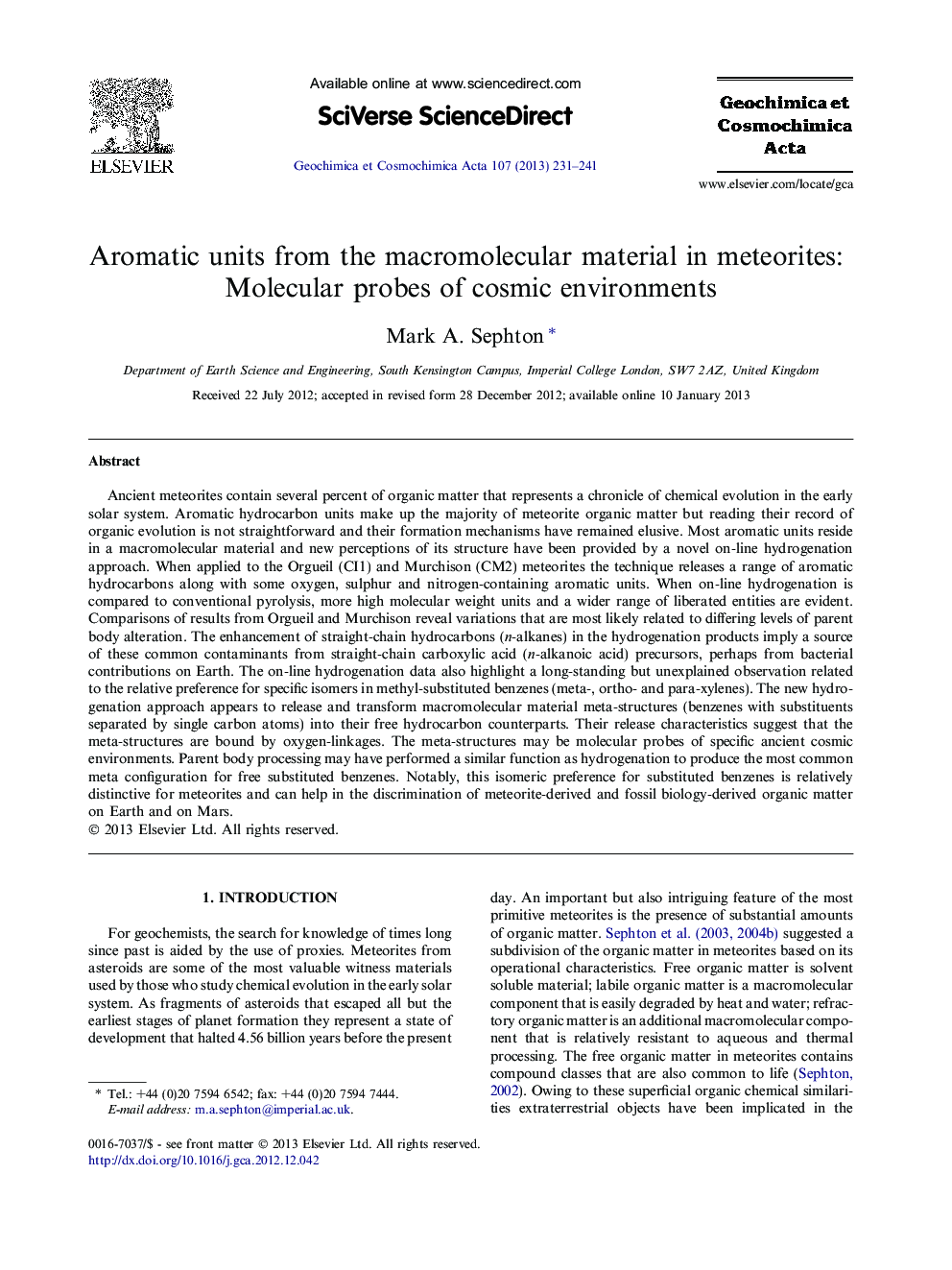| Article ID | Journal | Published Year | Pages | File Type |
|---|---|---|---|---|
| 4702469 | Geochimica et Cosmochimica Acta | 2013 | 11 Pages |
Abstract
Ancient meteorites contain several percent of organic matter that represents a chronicle of chemical evolution in the early solar system. Aromatic hydrocarbon units make up the majority of meteorite organic matter but reading their record of organic evolution is not straightforward and their formation mechanisms have remained elusive. Most aromatic units reside in a macromolecular material and new perceptions of its structure have been provided by a novel on-line hydrogenation approach. When applied to the Orgueil (CI1) and Murchison (CM2) meteorites the technique releases a range of aromatic hydrocarbons along with some oxygen, sulphur and nitrogen-containing aromatic units. When on-line hydrogenation is compared to conventional pyrolysis, more high molecular weight units and a wider range of liberated entities are evident. Comparisons of results from Orgueil and Murchison reveal variations that are most likely related to differing levels of parent body alteration. The enhancement of straight-chain hydrocarbons (n-alkanes) in the hydrogenation products imply a source of these common contaminants from straight-chain carboxylic acid (n-alkanoic acid) precursors, perhaps from bacterial contributions on Earth. The on-line hydrogenation data also highlight a long-standing but unexplained observation related to the relative preference for specific isomers in methyl-substituted benzenes (meta-, ortho- and para-xylenes). The new hydrogenation approach appears to release and transform macromolecular material meta-structures (benzenes with substituents separated by single carbon atoms) into their free hydrocarbon counterparts. Their release characteristics suggest that the meta-structures are bound by oxygen-linkages. The meta-structures may be molecular probes of specific ancient cosmic environments. Parent body processing may have performed a similar function as hydrogenation to produce the most common meta configuration for free substituted benzenes. Notably, this isomeric preference for substituted benzenes is relatively distinctive for meteorites and can help in the discrimination of meteorite-derived and fossil biology-derived organic matter on Earth and on Mars.
Related Topics
Physical Sciences and Engineering
Earth and Planetary Sciences
Geochemistry and Petrology
Authors
Mark A. Sephton,
